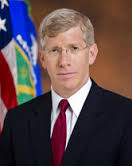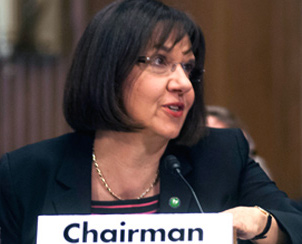By William Opalka
Five transmission projects intended to serve New York City and respond to a potential nuclear plant closure suffered setbacks last week as a divided Federal Energy Regulatory Commission rejected the developers’ cost allocation proposals and reduced their requested returns on equity (ROE).
The commission granted some of the developers’ requests for ROE incentives but ordered settlement and hearing proceedings on proposed formula rates, protocols and the base ROE (ER15-572).
On Dec. 4, NYISO proposed a cost-of-service formula rate template and formula rate implementation protocols on behalf of New York Transco, comprised of affiliates of the New York Transmission Owners, Consolidated Edison of New York, National Grid, Iberdrola USA and Central Hudson Gas & Electric.
The companies submitted five projects in response to competitive solicitations issued by the New York Public Service Commission.
Two AC projects, the estimated $1 billion Edic-Pleasant Valley 345-kV line and the $246 million Oakdale-Fraser 345-kV line, are intended to alleviate congestion on transmission lines serving the New York metropolitan area. (See Tx Plan to Open NY Choke Points Without New ROWs.)
The other three “Transmission Owner Transmission Solutions (TOTS)” projects were designed to address reliability concerns expected if the Indian Point nuclear plant closes. NYISO and the transmission owners sought an April 3 effective date on their proposed formula rate, protocols, cost allocations and 10.6% base return on equity.
The commission:
- Granted requests for construction work in progress, abandonment and pre-commercial cost recovery incentives, and a 50-basis-point ROE adder for membership in an RTO, subject to a cap within the “zone of reasonableness,” to be established through the hearing procedures.
- Approved an ROE adder for risks and challenges for the Edic-Pleasant Valley 345-kV line while rejecting it for the Oakdale-Fraser 345-kV line and the TOTS projects.
- Ordered the applicants to revise sections 3(e)(ix) and 4(b) of the formula rate protocols, as requested by the New York Association of Public Power, to provide more transparency. The commission said it was concerned with the allocations of shared plant or expense items between members of NY Transco and their parent companies.
- Rejected the cost allocation for all five projects.
- Denied applicants’ request for an ROE adder for being a transmission company. The commission said NY Transco’s members were not “sufficiently independent” to merit incentives, noting that they serve 84% of the state’s load and own 64% of its high voltage transmission and 4% of its generation capacity.
- Ordered hearing and settlement procedures on NY Transco’s proposed formula rates, protocols and base ROE, including components of the formula rate and the allocation of various expenses between the TOs and NY Transco. The commission ordered appointment of a settlement judge within 15 days and a report on the status of negotiations by May 4.
Dissents on Capital Structure
The majority also rejected applicants’ request for a “hypothetical” capital structure incentive of 60% equity and 40% debt for all five projects, instead approving a 50/50 structure.
NY Transco said it would use its actual capital structure in the formula rate after the projects are placed into service but that the hypothetical capital structure would improve its credit rating, reducing financing costs by $168 million compared with a 50/50 structure.
The majority said it agreed with protests by the PSC and others that the 60/40 capital ratio is “excessive for an entity such as NY Transco, whose affiliates … will construct the projects and perform the maintenance and physical operation of the NY Transco assets.”
That sparked a partial dissent by FERC Chairman Cheryl LaFleur and Commissioner Philip Moeller. “Today’s order does not merely apply an overly rigid approach to evaluating these capital structures; the majority has failed to provide any criteria or guidance as to how the commission will evaluate these capital structures going forward,” they wrote. “We believe the applicants demonstrated the required nexus between the need for the requested hypothetical capital structure and the facts of this particular case, and we would have granted the requested transmission incentive.”
LaFleur and Moeller also said the additional proceeding adds “needless uncertainty” to efforts to expeditiously build transmission infrastructure.
Cost Allocation
The commission rejected the cost allocation method for the AC and TOTS projects because it imposed costs on the New York Power Authority and the Long Island Power Authority, both public entities that have not been allowed to join NY Transco.
The PSC said the cost allocation proposal it initially supported included the voluntary participation of LIPA and NYPA, and covered 18 transmission projects throughout the state. NY Transco was originally planned as a six-party Transco, which included NYPA and LIPA, but the New York state legislature refused to allow NYPA permission to participate.
NYPA serves municipal systems throughout the state, but NY Transco’s cost allocation proposal would have assessed its municipals located upstate at the same rate as downstate municipals. “Grossly inequitable situations would arise where a NYPA customer located in the Rochester region would be allocated 16.9% of the costs while another [Rochester Gas & Electric] customer located across the street … would be allocated only 8.9% of the costs,” the commission said.
Because NYPA and LIPA have not accepted the cost allocation method, it cannot be considered a “participant funding method,” the commission said.
The applicants had proposed to allocate the costs of the three TOTS projects using an adjusted load ratio share approach, with 75% of the costs allocated to transmission districts southeast of the UPNY/SENY constraint and 25% allocated to upstate districts, a departure from the default ratio for public policy projects (60% downstate, 40% upstate). The PSC adopted a 90% downstate/10% upstate cost allocation for the AC projects.
The commission said the AC projects could qualify for regional cost allocation if the PSC decides they should be evaluated under NYISO’s Order 1000 public policy transmission planning process and the ISO selects the projects in the regional transmission plan.
Because the TOTS projects were evaluated by the PSC before NYISO’s Order 1000 transmission planning process, the ISO must reevaluate and select them to be eligible for regional cost allocation, the commission said.
Alternatively, the commission said the applicants may submit a revised allocation shared only by entities that agree to pay, “either by renegotiating the cost allocation with LIPA and NYPA or by allocating the costs solely among those transmission developers participating in the NY Transco.”
AC Projects
The commission said the 153-mile, Edic-Pleasant Valley 345-kV line deserved a risk-reducing incentive because it would relieve transmission congestion on existing lines by 41% in 2022.
The project would connect National Grid’s Edic substation in Oneida County to Con Edison’s Pleasant Valley substation in Dutchess County, entirely within existing rights-of-way. The project, including three new substations, would move an additional 1,000 MW from central New York to the southeast region. The line is expected to reduce transmission congestion costs, line losses and installed capacity costs by a net present value of almost $1.3 billion to $4.5 billion over 10 years.
The commission rejected such a bonus for the Oakdale-Fraser 345-kV project, saying it was not convinced it relieved “chronic and severe congestion.” The project would add a second, 57-mile 345-kV line between the Oakdale and Fraser 345-kV substations.
Indian Point Contingency
The three TOTS projects were approved by the PSC as a contingency plan for the loss of Entergy’s Indian Point nuclear plant. Entergy told investors last year it would consider shutting down the plant’s two units if it can reach a “constructive” settlement with state officials.
The transmission projects, which have an in-service deadline of June 1, 2016, are the:
- Fraser-Coopers Corner project, estimated at $66 million, which will increase power transfer by reducing series impedance over the existing 345-kV Marcy South transmission lines;
- Ramapo-Rock Tavern project ($121 million), which will add a second 345-kV line from Con Edison’s Ramapo 345-kV substation to Central Hudson’s Rock Tavern 345-kV substation; and
- Staten Island Unbottling Project ($262 million), which involves transmission upgrades to Con Edison’s interconnecting 345-kV transmission line with Cogeneration Technologies Linden Venture, to allow generating facilities located on Staten Island to export power to the rest of New York.




















